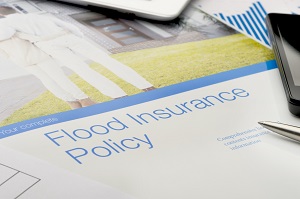
Understanding Flood Insurance Costs
Floods can cause devastating damage to your property and finances. These natural disasters are among the most costly to affect U.S. property owners. Furthermore, floods may occur anywhere, as evidenced by the recent torrential conditions brought by Hurricane Hilary throughout much of the southwestern United States.
Given the prevalence and potential severity of floods, property owners should strongly consider implementing and maintaining appropriate loss control measures capable of providing financial security, such as flood insurance.
What Factors Affect the Cost of Flood Insurance? 
Property owners should first understand that coverage for floods is typically not included in standard homeowners insurance policies. Similarly, commercial property insurance for businesses may also not include floods as a covered peril. In such situations, purchasing additional coverage as a standalone policy or endorsement may be essential.
The following factors may influence flood insurance premiums:
- Location—Where a property is geographically plays a significant role in the cost of insuring it against floods. Residing close to a body of water or in areas historically at greater risk of flooding may typically incur higher rates.
- Topographical circumstances—Although the geographic location of a property may influence its flood insurance rates, that’s not all that matters. For example, properties in floodplains may enjoy lower premiums if they are located on hills or at higher elevation.
- Construction details—A structure’s age, first-floor elevation, materials and the construction techniques used to build it may also affect flood insurance costs.
Coverage specifics—The details of a flood insurance policy may vary significantly. The types of coverage (e.g., buildings coverage and contents coverage) purchased, policy limits and deductibles may all influence premiums.
How to Save on Flood Insurance Premiums
There are many steps property owners can take to potentially limit or reduce their flood insurance costs.
- Elevate the property. Raising a home or commercial property above an area’s base flood elevation (BFE) can reduce flood risk and premiums.
- Install flood vents. These openings on exterior walls can allow water to flow between the inside and outside of a structure’s foundations, helping to equalize pressure.
- Fill basements. Having crawl spaces and basements below an area’s BFE can significantly increase flood insurance prices.
- Rearrange utilities and machinery. Moving valuable and essential equipment, such as water heaters, HVAC systems and electrical panels, further from potential flood risk (e.g., to higher floors) may help reduce premiums.
Get the Right Coverage
Having served businesses, families and individuals in Texas and New Mexico since 1982, Pan American Insurance is well-equipped to assess and address flood coverage needs. Our team has over 140 years of combined experience in the insurance industry and will work diligently to identify available options and procure ideal policies. Visit our website or call one of our offices today to learn more or get a personalized quote.
This blog is intended for informational and educational use only. It is not exhaustive and should not be construed as legal advice. Please contact your insurance professional for further information.
Categories: Blog
Tags: flood insurance
